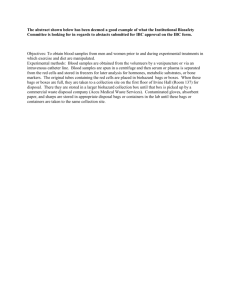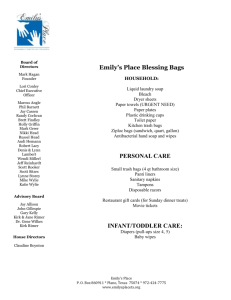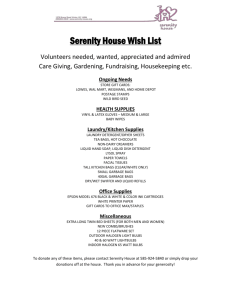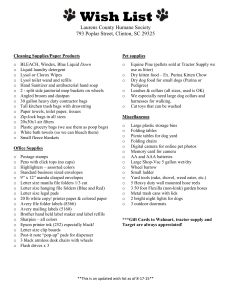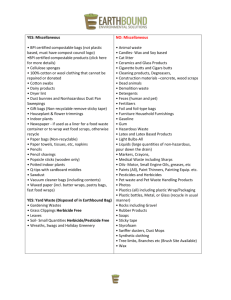Lighter Book Bags, Healthier Life
advertisement
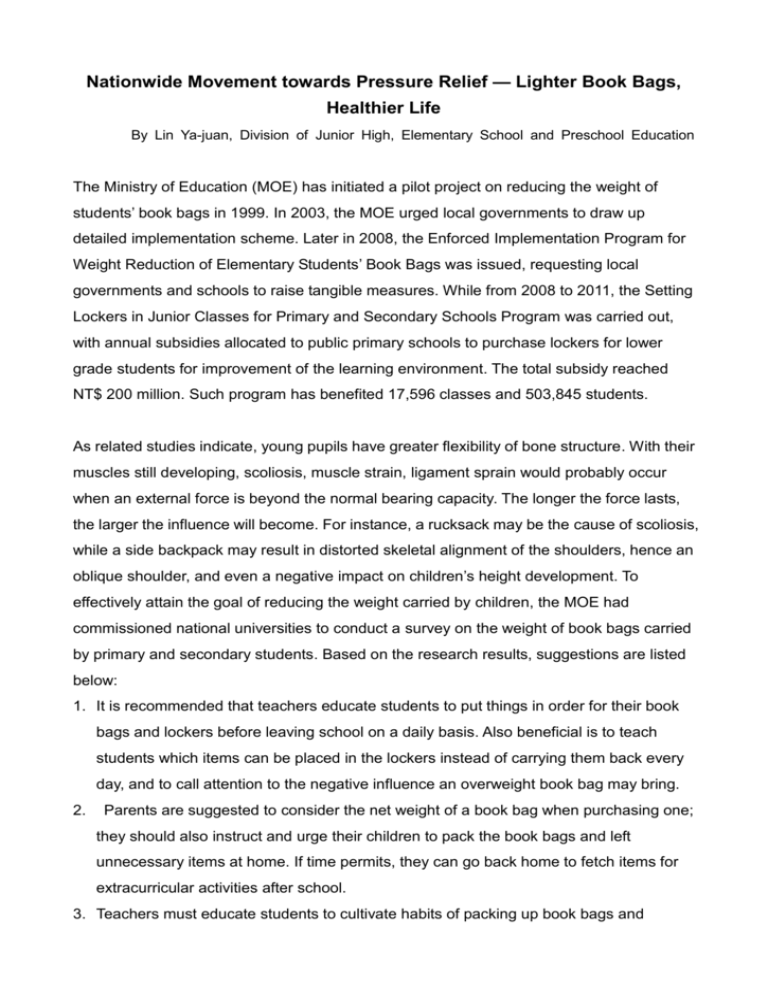
Nationwide Movement towards Pressure Relief — Lighter Book Bags, Healthier Life By Lin Ya-juan, Division of Junior High, Elementary School and Preschool Education The Ministry of Education (MOE) has initiated a pilot project on reducing the weight of students’ book bags in 1999. In 2003, the MOE urged local governments to draw up detailed implementation scheme. Later in 2008, the Enforced Implementation Program for Weight Reduction of Elementary Students’ Book Bags was issued, requesting local governments and schools to raise tangible measures. While from 2008 to 2011, the Setting Lockers in Junior Classes for Primary and Secondary Schools Program was carried out, with annual subsidies allocated to public primary schools to purchase lockers for lower grade students for improvement of the learning environment. The total subsidy reached NT$ 200 million. Such program has benefited 17,596 classes and 503,845 students. As related studies indicate, young pupils have greater flexibility of bone structure. With their muscles still developing, scoliosis, muscle strain, ligament sprain would probably occur when an external force is beyond the normal bearing capacity. The longer the force lasts, the larger the influence will become. For instance, a rucksack may be the cause of scoliosis, while a side backpack may result in distorted skeletal alignment of the shoulders, hence an oblique shoulder, and even a negative impact on children’s height development. To effectively attain the goal of reducing the weight carried by children, the MOE had commissioned national universities to conduct a survey on the weight of book bags carried by primary and secondary students. Based on the research results, suggestions are listed below: 1. It is recommended that teachers educate students to put things in order for their book bags and lockers before leaving school on a daily basis. Also beneficial is to teach students which items can be placed in the lockers instead of carrying them back every day, and to call attention to the negative influence an overweight book bag may bring. 2. Parents are suggested to consider the net weight of a book bag when purchasing one; they should also instruct and urge their children to pack the book bags and left unnecessary items at home. If time permits, they can go back home to fetch items for extracurricular activities after school. 3. Teachers must educate students to cultivate habits of packing up book bags and organize their belongings in desks and lockers. Make sure that the weight of book bags (and handbags included) shall not exceed 12.5 % (1/8) of one’s body weight; it is advised that students make full use of utilities at school. For example, they can place books in the lockers, use the drinking fountain in school, and enjoy outside reading in the library instead of borrowing all the books home. To ensure pupils have normal development of bone structure and physical fitness, it is crucial that teachers and parents alike joint hands to reduce the weight of book bags carried by children to avoid problems such as scoliosis, muscle strain, and ligament sprain. By educating children to pack up book bags, and utilize more of the lockers and drinking fountains in school, it is hoped that a happy childhood may be foreseen with lighter book bags, less stress and a healthier school life.



